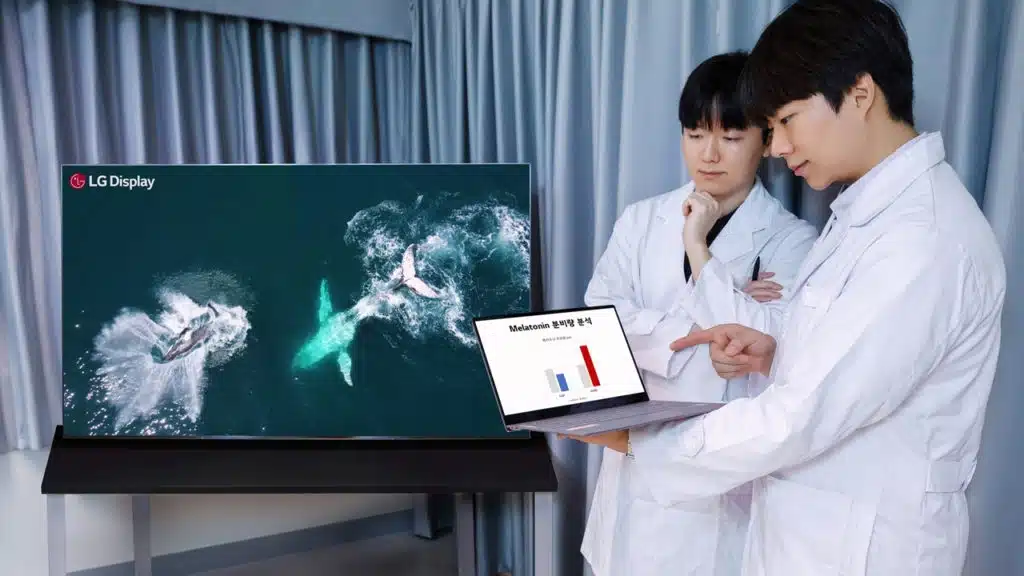OLED TVs, including those sold by LG, are less likely to have a detrimental effect on one’s sleep versus alternative display technologies that include LCD, according to the results of a joint clinical trial that LG Display recently completed with a research team from the Department of Electronic Engineering at Seoul’s Kookmin University, one that was conducted to verify the effects of TV panels on sleep. Melatonin, a compound that plays a crucial role in regulating the sleep-wake cycle, actually increased among subjects who watched OLED TVs, but decreased for those who watched LCD TVs, the researchers found.
LG writes (machine translation):
- “LG Display’s OLED TV panel has been proven to be a human-friendly display that is excellent in maintaining viewers’ healthy sleep patterns.”
- “[A] test was conducted on 40 adult men and women, who watched the same content for two hours on OLED TV and LCD TV at night for two weeks, and then measured the secretion of melatonin, a sleep-inducing hormone.”
- “…the melatonin secretion of the test group that watched LCD TV decreased by 2.7% compared to before watching, while the melatonin secretion of the test group that watched OLED TV increased by 8.1%.”
- “Melatonin secretion gradually increases from the evening, preparing our bodies for sleep. It is known that harmful blue light emitted from displays can interfere with melatonin production and cause sleep disorders.”
- “Generally, LCD panels emit 70-80% of harmful blue light because the backlight continuously emits strong light, whereas LG Display’s OLED TV panels emit only 36% of harmful blue light because each element emits light on its own without a backlight, which is analyzed to be helpful for normal sleep activities.”
A promo for LG’s META Technology 2.0, which was introduced earlier this year for brighter panels:
LG added:
Last year, TUV Rheinland, a global safety and quality testing and certification agency, was the first in the industry to grant LG Display’s OLED TV and monitor panels the ‘ Circadian Friendly’ certification, meaning that the displays are optimized for the viewer’s biological rhythm.
Also, it has received the EyeSafe certification jointly developed by EyeSafe, an American eye safety expert organization, and TUV Rheinland, and has also received the Flicker Free and Discomfort Glare Free certifications from UL, a global safety science company. This is because it has been proven that it has the lowest proportion of harmful blue light among existing TV panels and does not have the screen flickering phenomenon that causes vision impairment.


